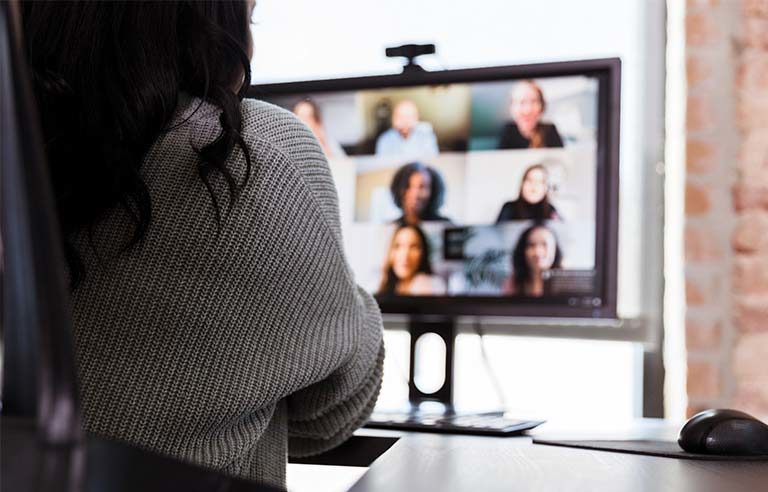Survey explores webcam fatigue among workers

Halifax, Nova Scotia — Nearly half of employees working remotely are experiencing higher levels of exhaustion caused by a combination of more virtual meetings and pressure to be on camera for them, results of a recent survey show.
Researchers from consulting firm Virtira surveyed more than 1,700 employees, managers and executives between Jan. 28 and Feb. 8 to determine the impact of employer polices regarding the use of video during virtual meetings on employee well-being. They also analyzed more than 1,000 comments for further insights and gathered data from a selected group of 500 respondents regarding updates on the frequency of meetings.
The researchers found that 49% of respondents agreed with the statement: “Being on webcam during meetings makes me more exhausted.” That percentage was higher for employees between the ages of 18 and 34 – 64 for respondents 18-24 years old and 57 for those 25-34. Half of the employees between the ages of 35 and 44 agreed, and the percentages continued to descend as respondent age ranges increased: 45-54 (43%), 55-64 (40%), and 65 and older (21%).
One-third of the respondents said company or department policy dictates that cameras remain on for all meetings. Around 56% of the respondents indicated they’re on camera between one to three hours a day.
The report includes recommendations and advice for employers:
- Video is best used in small groups, one-on-one meetings or in the opening minutes of larger meetings “for everyone to say hello.”
- Because peer pressure can affect younger workers, make camera use a personal choice whenever possible. “Beyond the presenter or the leader of the call, there is no indication that large meetings, with a screen of talking heads, have any advantage over audio and may increase distraction and participant anxiety.”
- Remember that meetings aren’t substitutes for informal chats.
- “Packing” extra people into virtual meetings wastes time and reduces productivity. Use notes and recordings to help employees get updates when they’re free.
In a press release, Virtira CEO Cynthia Watson said, “Employers need to shift their policies and have candid conversations with their teams about how many meetings they are having and how they feel about meeting on video. Especially as we move toward hybrid work models, virtual meetings with others aren’t going away – so employers have an opportunity to craft policies to improve well-being.”
Post a comment to this article
Safety+Health welcomes comments that promote respectful dialogue. Please stay on topic. Comments that contain personal attacks, profanity or abusive language – or those aggressively promoting products or services – will be removed. We reserve the right to determine which comments violate our comment policy. (Anonymous comments are welcome; merely skip the “name” field in the comment box. An email address is required but will not be included with your comment.)

